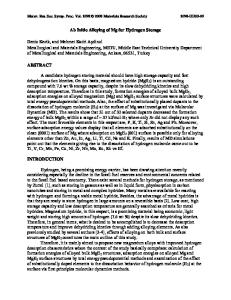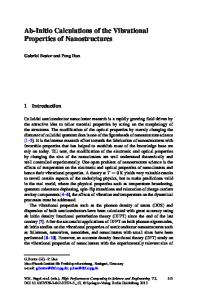Ab initio calculation of double mass differences for near-magic nuclei
- PDF / 986,518 Bytes
- 15 Pages / 612 x 792 pts (letter) Page_size
- 95 Downloads / 271 Views
CLEI Theory
Ab Initio Calculation of Double Mass Differences for Near-Magic Nuclei N. V. Gnezdilov1), 2) and E. E. Saperstein1)* Received August 12, 2013
Abstract—Double mass differences between nuclei with a magic number of protons (neutrons) and their neighbors differing from them by one or two protons (neutrons) are calculated within the semimicroscopic model proposed recently for the nuclear pairing problem. The main term in the effective nucleon interaction is calculated on the basis of the realistic Argonne nucleon–nucleon potential v18 . This term is supplemented with a small phenomenological term involving one universal parameter common to protons and neutrons. The double mass differences are calculated for the proton neighbors of the Z = 82, 50, 28, and 20 lead, tin, nickel, and calcium isotopic chains and for the neutron neighbors of the N = 126, 82, 50, and 20 isotonic chains. The corrections to the model that are induced by the contribution of low-lying surface vibrations (phonons) are discussed. DOI: 10.1134/S1063778814020070
1. INTRODUCTION In recent years, considerable advances have been made in the ab initio theory of nucleon pairing in nuclei [1–8]. By ab initio approach, we mean a theory that starts from a realistic nucleon–nucleon (N N ) potential—that is, a potential that describes the scattering of free nucleons in a vacuum that have energies in the range of E ≤ 300 MeV. This terminology is adopted in low-energy nuclear physics, in contrast to particle physics, where this term is used for approaches based on QCD. Unfortunately, it is the region of low energies that presents the most difficult challenge to QCD. In particular, the problem of lowenergy N N scattering has not yet been solved within QCD. There is a QCD-motivated intermediate approach known as an effective field theory [9], where, however, one has to introduce a large number of phenomenological parameters, which sometimes exceeds the number of parameters used in realistic potentials. An advantage of effective field theory is that, in it, three-particle N N N forces arise naturally along with two-particle N N forces without the introduction of additional parameters. This approach to the pairing problem was used in [10]. Solving the Bardeen–Cooper–Schrieffer (BCS) equation for the gap Δ with a realistic N N potential as a pairing interaction is the first step in the ab 1)
National Research Centre Kurchatov Institute, pl. Akademika Kurchatova 1, Moscow, 123182 Russia. 2) National Research Nuclear University MEPhI, Kashirskoe sh. 31, Moscow, 115409 Russia. * E-mail: [email protected]
initio theory of pairing. This recipe is suggested by Brueckner theory in its simplest version [11] since ladder diagrams, whose summation is typical of this approach, have already been taken into account in the gap equation itself. The study that was reported by a Milan group in [1] and in which the gap equation was solved in a basis without allowance for a possible deviation of the effective mass m∗ from the free-nucleon mass m played an important role. It turned
Data Loading...









